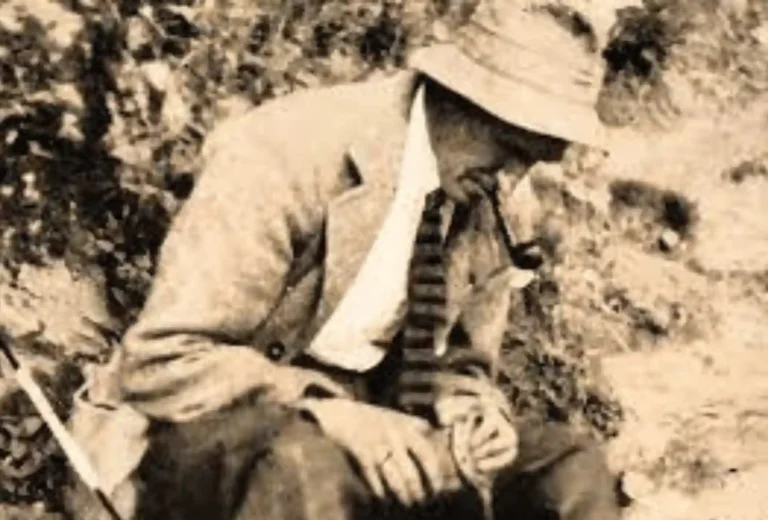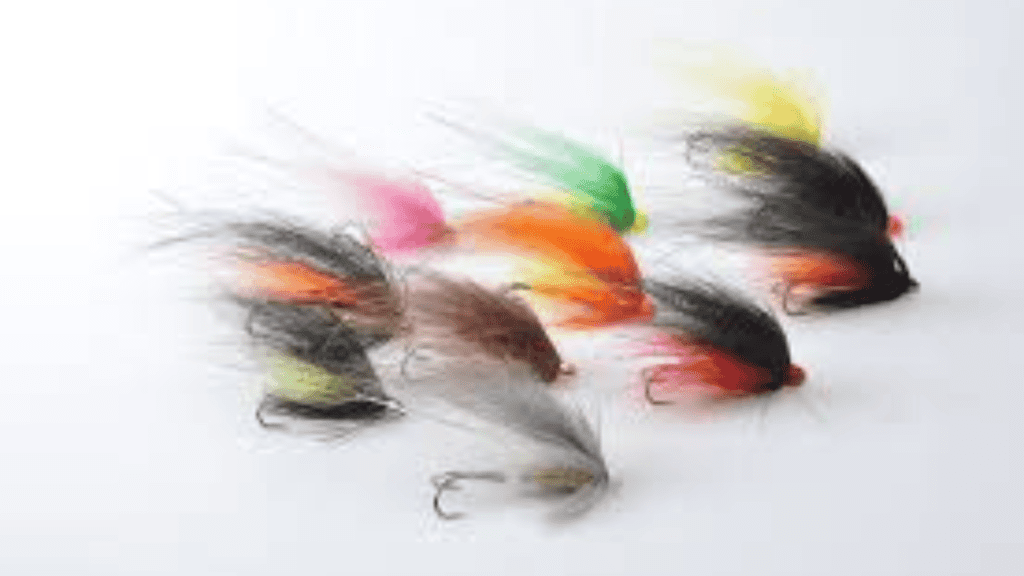What Is a Tube Fly? History, Advantages, & How To Tie In 2024

But, don’t worry, I am here for you. I have used this tactic for a long tip and I will give you my honest reviews and opinions.
So, in this blog, we’ll talk about the history of tube flies, the different kinds of tube flies, and the best times to use them. I’ll also give you tips on picking the right tube fly, choosing the right leader for tube flies, how to tie a tube fly, and different patterns you can try.
Fly fishing with tube flies is getting more and more popular these day. I my self use this tactic for fly fishing. It makes my fishing easy and exciting. You might have some doubts and questions about Tube fly fishing.
I’ll even share some good ways to store and take care of your tube flies and answer some questions people often ask. So, lets begain.
Must Read: An In-depth Guide on Fly Fishing Tippet
What is a Tube Fly?
A tube fly is a special kind of fake fly that fly anglers use. What makes it different is that it’s not tied on a regular hook but on a small tube instead.
These tube flies were first made in Aberdeen, Scotland, around 1945 by a person named Minnie Morawski.

She made them for people who like to catch Atlantic salmon. The idea was to make sure the fish got hooked well and to protect expensive salmon flies from being damaged by the fish’s teeth.
People now use tube flies for different kinds of fish in both cold and warm water. They are quite popular for catching steelhead and salmon in places like the Pacific Northwest and the northeast United States.
People also use them a lot for fishing in saltwater along the Atlantic, Florida, and Gulf Coasts. In Europe, anglers use tube flies for catching Atlantic salmon, sea trout, and pike.
Complete History of Tube Fly
The origins of tube fly fishing need to be well-documented. Still, the earliest published references are said to date back to 1932 by Alexander Wanless. He viewed tube flies as a solution to losing many hooked salmon.
Wanless described the tube fly as having a hole through its center, allowing it to slide up the line when a fish is being played.

After that, the tube fly style was first thought of by Minnie Morawski, who worked at a company called Charles Playfair and Company in Aberdeen, Scotland. In 1945, she started using small tubes instead of regular hooks for making salmon and trout flies.
At first, she tied the flies on top of turkey quill tubes, but soon, she started tying them “in the round” and on plastic tubes. By the late 1950s, a magazine called Trout and Salmon said that tube flies were the most important new thing in salmon fishing since the 1930s.
People in the Pacific Northwest, Northeast U.S., and Florida quickly started using tube flies for fishing in saltwater. Instead of casting, they often trolled these flies in the water.
From the late 1940s to the early 1970s, small businesses sold tube flies to anglers along the Pacific, Atlantic, and Florida coasts.
As more and more anglers in Europe and the U.S. learned about tube flies, new patterns were created for catching different types of fish.
In the late 1960s and early 1970s, American anglers started using the tube fly style for making floating patterns like surface poppers and sliders.
In 1987, Bob Popovic, a fly designer and angler from New Jersey, came up with the idea of using high-density foam material to make saltwater poppers in the tube style.
Even though most anglers still use flies with regular hooks, tube fly-style patterns, and materials are now used by anglers worldwide for different types of fish and in different waters.
Recommended: How To Fish Emerger For Trout
Materials Used for Tube Flies
Tube flies are an extraordinary lure for fly fishing, and people like them a lot because you can use different stuff to make them.
The main thing for tube flies is plastic or metal tubing. It comes in different sizes so that you can make many shapes and sizes of tube flies. The tubes have little eyes on both ends, making adding things like hooks, leaders, and tippets easy.

There’s also this other material called synthetic fibers. They come in different colors and textures, so you can make your tube fly match the water and stuff.
Some synthetic fibers even shine, getting fish’s attention from far away. And they last longer than natural fibers, so your tube fly stays suitable longer.
Lastly, some tube flies have feathers or fur on them. Feathers move like real things in the water, and fur makes the fly a bit heavier so you can cast it farther.
You can dye feathers and fur in different colors, making them easy to see in low light or hide from fish.
Feathers and fur make the tube fly look like real fish food, making them more likely to bite.
Must Read: History of Fly Fishing
Best Conditions for Using Tube Flies
Tube flies can be effective in various conditions but work exceptionally well in specific situations. The ideal conditions for using tube flies include clear and slow-moving water with low light levels and areas with more fish.
Clearwater helps the fish see the lure better, and the slower current allows the lure to stay in one place long enough for the fish to notice it. Low light levels reduce visibility, making the lure less noticeable to cautious fish.
Areas with more fish increase the chances of catching one or more fish at once.
To use tube flies successfully in these conditions, it’s essential to present them correctly and move them slowly through the water. This mimics natural prey behavior and increases the chances of attracting curious fish.
With practice and patience, anglers can succeed using tube flies in these favorable scenarios.
Tips for Selecting the Right Tube Fly
Choosing the right tube fly can be tricky for beginners. To make it easier, consider these tips:
- Consider the type of water you will be fishing – Different water types require different flies. Knowing your environment helps narrow down your selection.
- Research the type of fish you’ll target – Different fish prefer different tube flies. Understanding their food preferences helps them choose the perfect tube fly pattern.
- Match the hatch – Look around and observe the insects and aquatic creatures in the area. Choose a tube fly that resembles them in shape, size, and color.
Consider weather conditions and water clarity when selecting a tube fly pattern. Windy or cloudy conditions favor larger or darker flies.
In comparison, slower currents require heavier flies, and faster currents require lighter ones. Experimenting with different patterns helps find the most effective one for your situation.
How to choose the Right Leader for Tube Flies?
In fly fishing, the leader is crucial for success, especially when using tube flies. Consider these factors when choosing a leader:
- Size of the leader – Larger leaders offer more strength for casting, while smaller ones are better for finesse presentations. Match the leader size to the water conditions.
- Material – Fluorocarbon provides abrasion resistance and underwater invisibility, while monofilament can be effective in certain situations, although it’s less durable.
Variations of Tube Fly Patterns
Tube flies come in various patterns designed for different fishing conditions:
- Dry flies are best for trout and panfish.
- Streamers work well for salmon and large fish.
- Wet flies are excellent for slow-moving water.
- Nymphs are suitable for fast water.
- Poppers target surface feeders like bass, pike, and walleye.
Choose a tube fly pattern based on the type of fish you want to catch, ensuring the size and shape match the targeted species.
Recommended: What is a Tippet Fly Fishing
Advantages Of Tube Fly
Here are some notable advantages that may inspire you to give tube flies a try:
Versatility
Unlike traditional flies, where materials are tied directly to the hook shank, tube flies offer flexibility. You can use the same fly in various setups since they are tied to a plastic tube and not directly to the hook. Whether on a single hook rig or a tandem rig, as a stand-alone fly, or with added accessories like a popper or bubbler cone, it’s all the same fly.
Control
Even if you don’t tie flies, you have complete control over the size and style of hooks you use with tube flies. For instance, you can imitate larger baitfish for species like marlin without using an oversized hook shank. If you decide to change hook size or style on your next trip, you only need to adjust your leader and slide the fly onto the desired hooks.
Lack of Leverage
Traditional flies with long shank hooks can give big pelagic fish a leverage point, making it easier for them to shake the hook. Using various hook styles and sizes, Tube flies reduce this leverage effect. The lack of a long shank minimizes the chances of the hook popping out at certain angles, offering a more secure hookset.
Slide Factor
When applying tension on a fish hooked with a tube fly, the fly can slide up the leader. Though limited by offshore fly fishing knots, this sliding action can get the fly out of the fish’s face during the fight, preserving the fly and potentially making the fight smoother.
Hook Help
Hooks can get damaged or broken. In the case of tube flies, it’s easier to address. If a hook issue arises, you can swap out the tippet with a pre-tied one, slide the same tube fly on, tie on a new hook, and get back to fishing without much hassle.
More advantages of modern tube flies:
- Rapid Adjustment for Changing Conditions: A single tube can be adapted to various situations, eliminating the need for different flies or lures on different hooks.
- Better Baitfish Replication: A tube’s extended, thin profile better replicates baitfish, creating a natural appearance.
- Shorter Hooks: Longer tubes eliminate the need for large, cumbersome hooks, improving lure presentation.
- Simplified Tackle: Tubes take up little space and allow easy hook swapping without damaging lures.
- Longer Lasting: Tubes experience less damage on take than conventional lures, resulting in increased durability.
- More straightforward Catch and Release Fishing: Tubes allow for easily removing deeply hooked fish without further injury.
- Barbed or Barbless: Hooks can be used according to fishery rules on the same tube fly, offering flexibility.
- Swappable Hooks: Hooks can be swapped out when dull instead of sharpening them at the water’s edge.
Recommended: How To Fish Emerger For Trout
How to Tie Tube Flies
Even though many vise brands now have specific heads for tube flies, you usually only need an adapter to begin. These adapters have different designs, such as vise adapters, tapered pins, and flat pins.
Each has its advantages and drawbacks, and I use them based on the type or size of the tube.
In this example, I use the “step down” method with a liner (1.8mm) and the main tube (3.0mm).
- Clip your main tube at an angle to make it easier to join the two tubes.
- Slide the liner inside the larger tube. Make sure the liner doesn’t stay within the midway point of the larger tube to ensure the ability to attach the hook to the end of the 3.0mm tube (if not using junction tubing).
- Place your tube on your adapter (in this case, a tapered needle). Heating the needle with a lighter will make the tube “stick” rather than spin if you’re experiencing this.
- Tie your fly. This step is similar to tying a non-tube fly, except your fly will use more materials. Using wax and glue is highly recommended, especially when working toward the head of the fly.
- Lastly, choose a tube hook and swing your fly!
Clip off excess tubing once you’re finished. Some tiers like to melt the tube tip to form a “ridge” to prevent the head from slipping off. I rarely do this as I have yet to experience it using sufficient glue, wax, an
Final Thoughts on Tube Flies
Tube flies are an excellent choice for fly fishing and are gaining popularity. Entube flies effectively catch various fish species with suitable materials, techniques, and fishing conditions.
I Enjoyed using fly tubes and you will enjoy your it too. I Hope, my guide was of some help to you. Thank you!

Meet Ibrahim Khan, an avid angler and author in Fishing Teach. He shares his wealth of knowledge from his 16 years of experiences in fishing. His articles are a captivating blend of practical insights and thrilling tales that invite readers into the enchanting world of fishing.
Ibrahim’s guides are your go-to guide in the realm of fishing on this informational site. Hailing from a coastal paradise, Ibrahim’s passion for angling is the heartbeat of his life.
